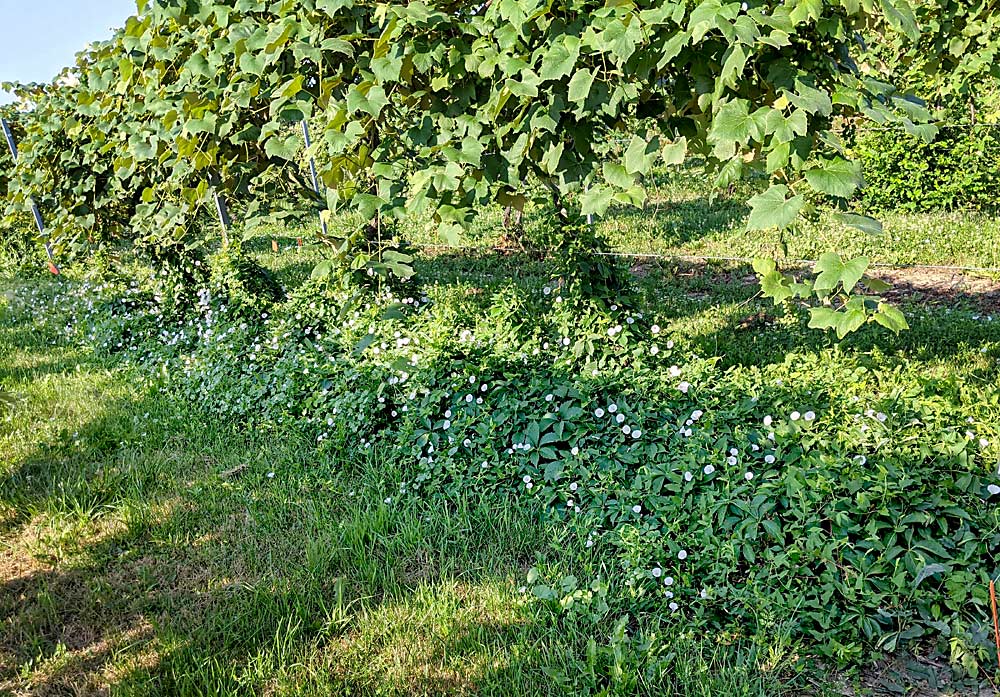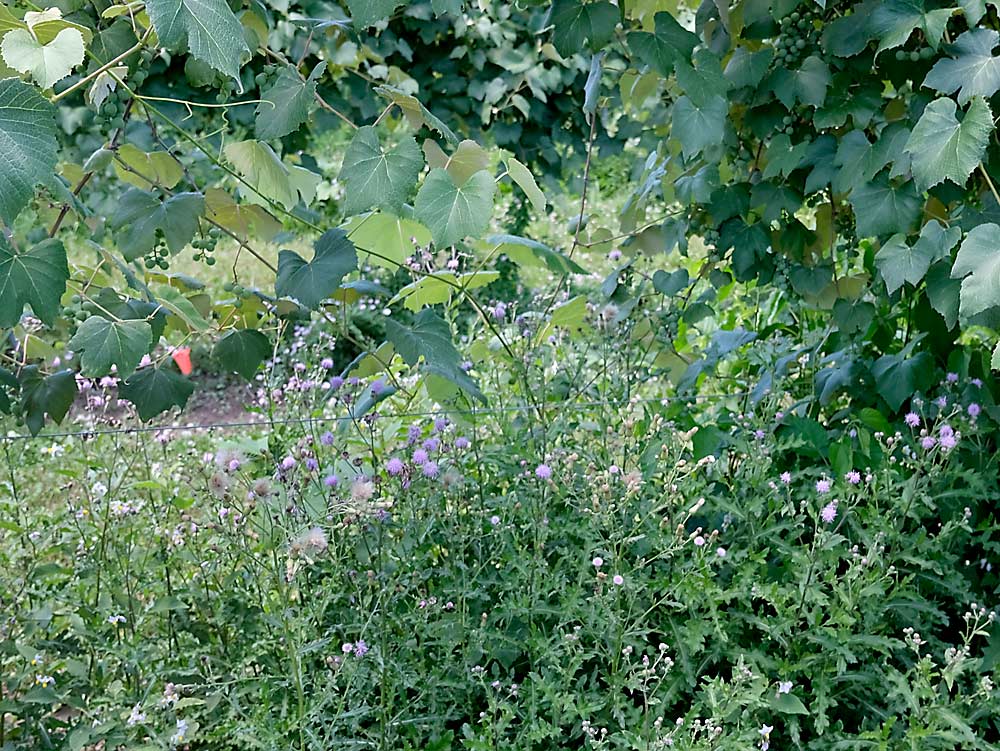
Weed management in vineyards should be a year-round concern, but the summer herbicide application in particular sets the stage for a successful harvest, said Sushila Chaudhari, assistant professor and weed specialist at Michigan State University.
In Michigan vineyards, which largely consist of the Concord and Niagara varieties, weeds can impact fruit yield and quality by competing for water, nutrients and sunlight. They also harbor insects and other vineyard pests. The main goal of summer weed control is to reduce weed interference in manual or machine harvest (most juice grapes in the state are machine harvested), and to reduce the soil’s weed seed bank for the following season, Chaudhari said.
She gave a talk during MSU’s Viticulture Field Day webinar series in July. Normally held in person, the event was held remotely this year.
Comprehensive weed management programs should incorporate multiple techniques, including tillage, hand-weeding, mowing, flame weeding, mulching and cover crops. Each practice has its pros and cons, however, and much depends on a vineyard’s location, soil type and size. For example, hand weeding is an effective technique but difficult for a big commercial vineyard, because it’s expensive and time consuming. Mowing can increase organic matter, but too much of it can compact soil and restrict root growth, Chaudhari said.

Herbicides are a critical component of weed management programs, but they face their own challenges. Incorrect identification of weeds, selecting the wrong herbicide, unfavorable weather conditions, incorrect application timing or other applicator error can all lead to insufficient control. Another limitation is that there are few herbicides that can be used on grapes. Post-emergent herbicides available for summer applications include Rely (glufosinate), Gramoxone (paraquat), Aim (carfentrazone-ethyl), Venue (pyraflufen-ethyl), Roundup (glyphosate), Poast (sethoxydim) and Fusilade (fluazifop-P-butyl), Chaudhari said.
One of the more difficult-to-control weeds in Michigan vineyards is field bindweed, a perennial that can spread through seeds and roots. Chaudhari is testing several post-emergent herbicides for their efficacy on bindweed in Concord grapes. Another problematic perennial is Canada thistle. Its roots can grow up to 6 feet deep and up to 12 feet horizontally. New shoots emerge from that extensive underground network, she said.
Here are some of the other points Chaudhari made during her webinar:
—Weed management might be most critical in the first three years after planting, to allow the vines time to properly establish.
—Soil texture and organic matter play important roles in pre-emergent herbicide rates. The greater the organic matter and clay content, the greater the adsorption of herbicide, so the higher the rate needed. Light or sandy soils need lower rates of herbicide.
—The best time to apply pre-emergent herbicides is on bare ground in spring or fall, when there are few weeds. You might need to apply a post-emergent first, or mix it with the pre-emergent, to clean up any emerged weeds.
—Vegetation or crop residue can reduce the efficacy of pre-emergent herbicides.
—When considering a late summer or early fall herbicide application, follow the “pop can rule.” When the weed is the height of a pop can, post-emergent herbicide should be applied.
—When making applications, avoid contact with grapevines, green bark, leaves and any new growth, all of which can be injured by herbicides. •
—by Matt Milkovich






So you highlighted my two nemesis, bindeweed and cdn thistle. But do not discuss solutions for them???
Hi Dennis,
Other than the summer herbicide applications discussed in the story, you could try reaching out to the Michigan State University researcher, Sushila Chaudhari (https://www.canr.msu.edu/people/dr-sushila-chaudhari), or contact your local university extension office for ideas.